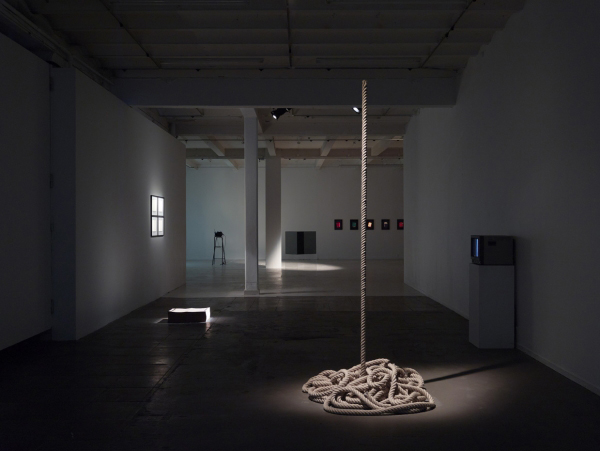
The Voice of Things, 2012. Solo show at Overgaden Institute of Contemporary Art,
Copenhagen, Denmark
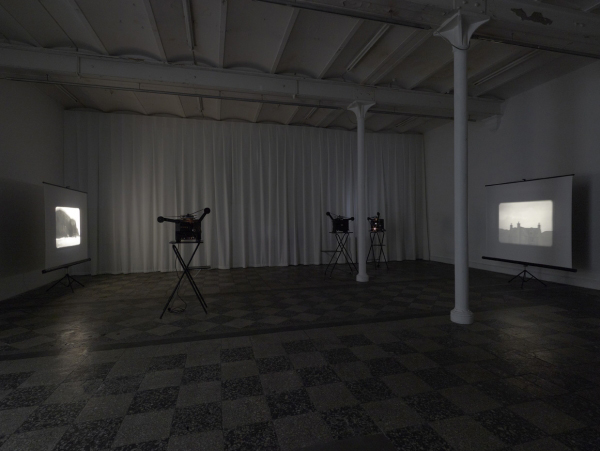
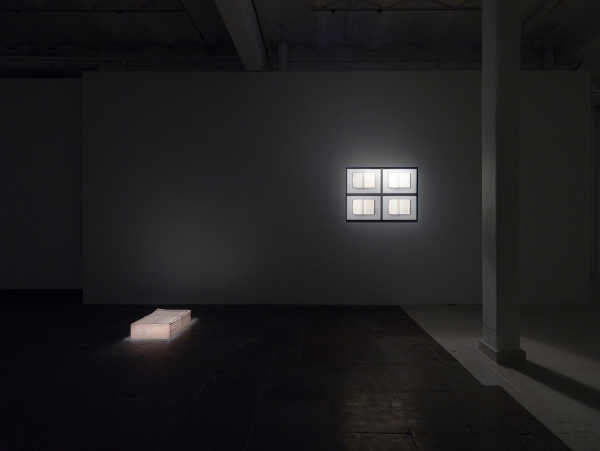
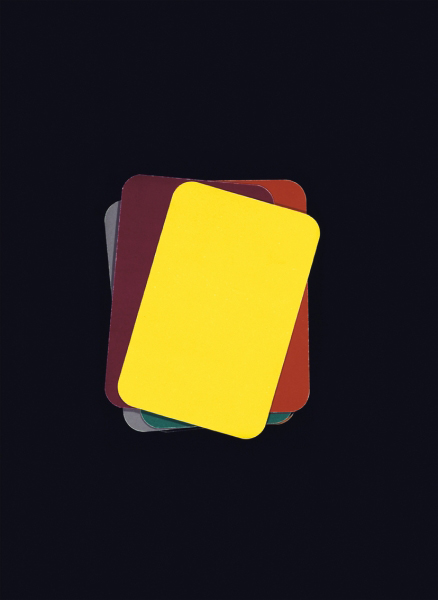
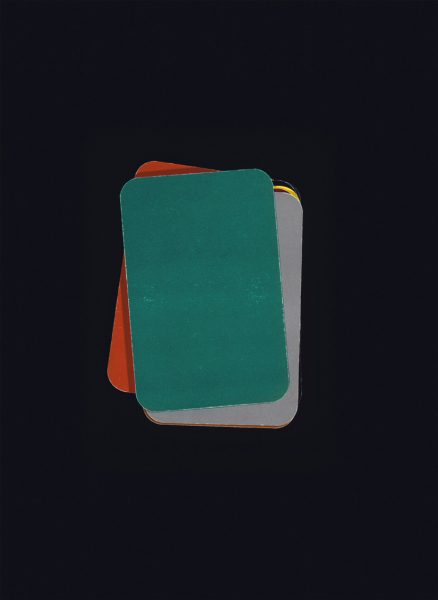
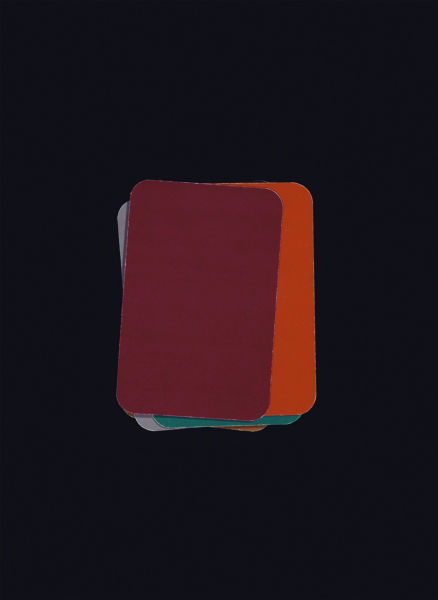

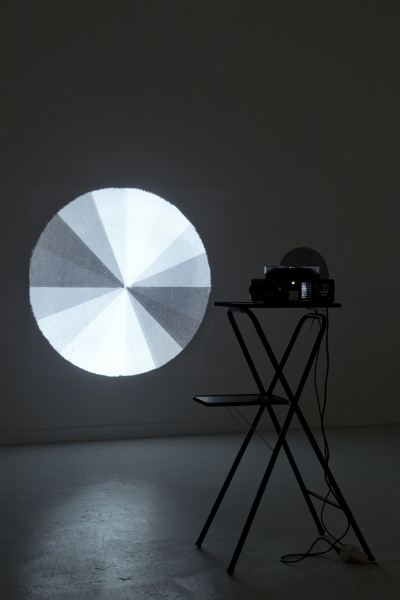

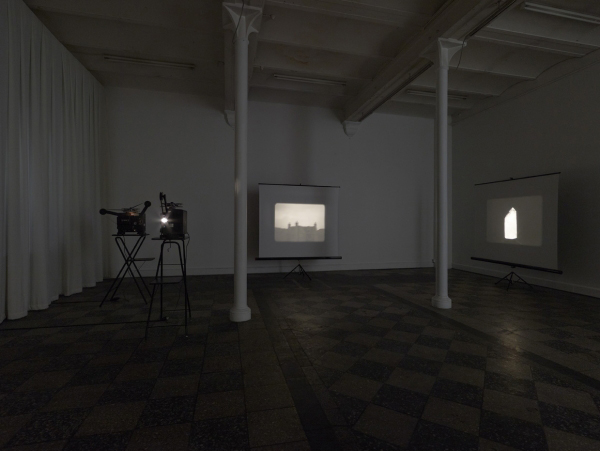
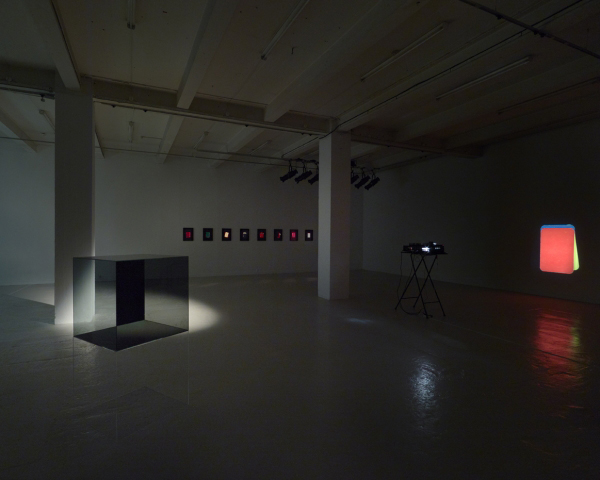

Press release
Ebbe Stub Wittrup: The Voice of Things
The question of what is real has been debated throughout the entire history of humanity: Is it what our senses tell us, or is there a world beyond what we can immediately perceive? In this philosophical field, Ebbe Stub Wittrup explores life’s enigmatic layers in the extensive solo exhibition The Voice of Things by highlighting phenomena and material drawn from the periphery of culture.
The front exhibition space on the ground floor of Overgaden lies in semi-darkness. A thick white curtain screens off the exhibition from the city outside, in a theatrical gesture that marks our entry into a universe where the usual concepts of reality are suspended. Here, the film installation Mary Rose – A Play in Three Acts (2011) is presented, which, in three 16 mm films, meditates on dimensions other than those our senses can perceive. Physical places and concrete objects act as metaphors for mental portals to other possible worlds.
Through photographs, slides, films and objects, the works in the exhibition displace in various ways the distinction between the perceived and the imagined. From fantastic tales of mysterious disappea-rances in the stormy Hebrides, the perspective shifts to the illusory, in the myth of a legendary Indian illusion, depicted in the form of a hypnotic film sequence. In the encounter with the work Glass Cube (2011), the viewer’s own sensory perceptions are challenged, while in a series of photographic works, a psychoanalytical personality test based on colour preferences is coupled with the technically perfected art of portraiture.
A number of the works in the exhibition draw upon historical material, but instead of taking a detective approach to exploring the mythical tales, Ebbe Stub Wittrup moves through an intuitive series of associations in which he emphasises the enigmatic as a premise for experience. Or, as he puts it: “It is vital to me that much is left unfinished. This creates a space with many possible stories, and it is important to me that you have that feeling when you are confronted with the works. I hope that the sum of the works creates the sensation of a third space – a space that must be sensed.”
Ebbe Stub Wittrup questions our conventional definition of what is objectively real. Each of the works suggests an ambiguous picture of the world around us, and when science comes up short in the narratives of the works, the artist’s language points out possible alternative routes into the unexplained.
Catalougue Texts
Anna Holm: The Existence of the Possible
The most beautiful thing we can experience is the mysterious.
– Albert Einstein, 1930 –
The question of what is real has been debated throughout the entire history of humanity: Is it what our senses tell us, or is there a world beyond what we can immediately perceive? In this philosophical field, Ebbe Stub Wittrup explores life’s enigmatic layers by highlighting phenomena and material drawn from the periphery of culture. His work emphasizes the ’otherness’ of reality which, as the art historian Rune Gade has put it, runs like an esoteric undercurrent beneath the realistic subject matter. Since the late 1990s, Stub Wittrup has been extending his photographic practice, in a movement from a neo-realistic snapshot aesthetics to a more conceptual sensibility with historical and literary dimensions. In the solo exhibition The Voice of Things, this movement finds expression in a cross-media field in which fiction, mythology and theosophy are interwoven with optical and colour-psychological phenomena.
The front exhibition room on the ground floor of Overgaden lies in semi-darkness. A thick, white curtain conceals the windows facing the canal, and blocks the view of everyday life on Torvegade; a theatrical gesture that signals that we are about to step into a world in which the usual concepts of reality are suspended. Here, the film installation Mary Rose – A Play in Three Acts (2011) is presented, which like previous works by Ebbe Stub Wittrup is based on a specific place shrouded in myth. This time it is the rugged, storm-swept islands of the Hebrides, which both in local tales and in the world of fiction have been associated with mysterious disappearances, including those described by the Scottish writer J.M. Barrie in the play from which the installation takes its name. The play, written in 1920, is partly set on the island of Harris, where the story’s protagonist, Mary Rose, disappears into a timeless parallel world; first as a child, and later as an adult, where after several decades she returns without having aged, and with no recollection of what has transpired. On the basis of these stories, the work, consisting of three black and white 16mm films, meditates on possible dimensions other than those we can see with the naked eye. In displaced film sequences, gothic scenes of desolate landscapes and abandoned houses fade into lingering images of the mouth of the legendary Fingal’s Cave. The cave opens up in the cliff like a portal to another world, and is reputed in Celtic mythology, and later intheosophy, to possess supernatural powers. From the third film strip, razor-sharp images of objects associated with occult lore appear: An old book filled with closely packed, looping handwriting and a large, luminous crystal, which in an insistent materiality have a hyper-real appearance against the black background. Fluctuating between passive recording and the metaphorical, the films’ levels of reality and fiction are woven into each other in a suggestive universe of intense suspense, which opens up the concept of reality in an ontological vacillation between the perceived and the imagined.
In the work The Indian Rope Trick (2011), the perspective shifts from the fantastic to the illusory. The trick is reputed to be one of the world’s oldest illusions, but in fact it can only be dated back to 1890, when it was first described by the journalist John Elbert Wilkie in the Chicago Tribune. Shortly afterwards the story was exposed in the same newspaper as pure fiction, but the trick had already taken hold in the public consciousness, and has since been performed in several places in India. The product of one man’s imagination has thereby become a collective reality, which, like myth, in the perspective of the semiotician Roland Barthes, has forgotten its own historical genesis. In the work, which consists of a video and an object, Stub Wittrup does not address the trick’s ideological and historical implications, but instead attempts to approach the myth as a formal figure. A rope rises up from the floor in the middle of the exhibition space and floats in the air like a physical impossibility, which makes the trick both concrete and abstract by reducing it to a primordial form found in several cultures. The same oscillation between form and content is present in the video work, in which the eye is drawn into the hypnotic compositions of ascending and descending ropes of varying sizes. The film is designed like a Möbius strip that continues indefinitely through a mirror image of the same recordings. In an unbroken movement, outside becomes inside, like a pictorialisation of the nature of the myth and the viewer’s encounter with the artwork. The meaning arises in an intersubjective tape loop of physical and mental reality, slipping imperceptibly into itself like the outer and inner sides of the Möbius strip.
The optical illusion is given more concrete form in the work Glass Cube (2011), which brings the viewer’s own senses into play. On top of a completely transparent cube rests an identical cube of polarised glass that alters the frequency of the light and changes its phase, so that it changes character, depending on the perspective. Seen from one location you see right through the grey box, while from another it closes up into a solid black form. In a particular position the work behaves like a so-called Necker cube, in which the observer experiences a switch in the perception of what is seen. Suddenly the box is oriented differently. The side which was previously in front is now at the back. On the immediate level, the work calls forth associations with the aesthetics of minimalism and its interest in the phenomenology of the artwork, but rather than emphasizing the object’s ’independence’, Stub Wittrup challenges the concept of the object as a stable phenomenon. Like the other works, the cube shifts between outer and inner space, between transparency and opacity, whereby viewers – in addition to being made aware of their own role in the act of perception – find that their faith in the seen is shaken. In this way, the work opens up a critique of the rational Western understanding of the world, linked as it is to an empirical tradition and the prioritisation of the sense of sight as a channel of objective information.
The subjective nature of sensory perception is further accentuated in the final series of works in the exhibition, which reflects upon colour phenomena as a bridge to the unconscious. These works are based on the controversial personality test formulated by the Swiss psychoanalyst Max Lüscher in 1948, which was used to identify psychological profiles on the basis of the test subject’s colour preferences. As in The Indian Rope Trick, the conceptual model has retreated into the background in a deliberate attempt to open up the viewer’s own interpretative space. In the work 8 Coloured Cards (2011), the eight cards of the test are reproduced as a series of portraits, each of which represents a fictitious personality. In the absence of Lüscher’s key to the test, the interpretation of the signs is left to the viewer, who ascribes meaning to them via her own associations and in the context of her own time. The same applies to the work Eight Cards Blending Colours (2011), which forms a contrast to Lüscher’s simplifying classification of the psyche. Slides of the eight colours of the test gradually blend into each other, adding countless new mixed shades to the colour spectrum, which, when projected onto the wall, opens up like a mental landscape that is constantly changing in depth and mood. As a phenomenon, colour is at once comprehensible and incomprehensible. In objective terms colours do not exist, they are an illusion – but nonetheless a reality. In the gap between the myths of culture and the sensing consciousness, the exhibition subtly weaves several parallel levels and modes of cognition together, to form an ambiguous picture of reality. Through the displaced view of myth towards the world and its phenomena, the works establish various modes of transformation and transgression that open up the possibility of pursuing alternative paths into the material. Using a strict and formal technique, Ebbe Stub Wittrup merges idea and materiality at the edge of language and logic, and points to what could have been, and which perhaps is, but which we have not yet called reality. Like this the world presents itself to us, not as a stable reality, but as a constant state of possibility that is constructed, takes shape and changes in the encounter with a sensing subject.
Claus Handberg: Geräusch Meister, interview
Claus Handberg Christensen Your works are often based on an extensive research. How do you approach the material?
Ebbe Stub Wittrup Yes, that’s right. There’s quite a lot of research involved in many of my works, and this forms the basis for some more intuitive processes that often end up creating connections. For example, part of the exhibition is based on the play Mary Rose by J.M. Barrie. The play is about a woman who disappears several times on the island of Harris in the Hebrides; first for 21 days and then for 25 years, during which she has been in a parallel world that is never further described in the play. What interested me about the play is that it’s about something that lies outside the story, which gives me an opportunity to reinvent the material. Later on I found out that the BBC had made a documentary about the island in which several people reportedly had the same experience as in the play. So I travelled to Harris to see if I could find anything to indicate how the phenomenon might have occurred. Three films resulted from that. One deals with the place where the play unfolds, and also involves a few locations from the BBC documentary. The second film is based on Fingal’s Cave, located on the island of Staffa, also in the Hebrides. The cave consists of hexagonal basalt columns, and is a place that many people have studied, including Rudolf Steiner, who ascribed supernatural powers to it. In the third film we see a crystal from Mexico and a book on graphology, which establishes a link to another part of the exhibition, which is about some colour cards that were developed for personality tests. The cards come with a book – I had to buy several copies of it to get a set of identical cards. With one of the books, an extra book about graphology happened to be included. It was from the 1920s, and contained analyses of the handwriting of various authors, reading it I discovered that the only thing J.M. Barrie had ever written with his left hand was the play Mary Rose. I became very interested in this, because it is said that if you write with your left hand you gain access to the brain hemisphere which is not based on reason, and this might shed some light on how the play came into existence. So there are multiple links in and between the works, which include aspects of the same phenomena. I should emphasize that I have not taken any position on whether something is true or false. It is the mythical aspect alone that interests me.
CHC It sounds like a kind of random research, in which you stumble over some connections along the way?
ESW That is a very accurate description of my way of working. I become fascinated by something and follow the pathways that lie buried in the material. Curiosity is the driving force.
CHC In connection with the Indian rope trick that you used as a springboard for two of the works, you have talked about an underlying figure. What did you mean by this?
ESW Formally, a rope that rises up in the air is a figure that appears in several cultures as a kind of collective primordial form. As it is also the first figure I began to work with in connection with this exhibition, it represents a kind of doorway to my work. The film of the ropes shows various compositions that have a perspective within them and create an optical illusion. The ropes vary in size. Some of them are descending, others ascending, depending on which way they are oriented. The film has no ending, it continues to mirror the same recordings. It is not a loop, but forms a Möbius strip – a strip with a half-twist, so that it only has one side. If you run your finger along such a strip, you come from the inside to the outside in the same movement. It is at one and the same time quite concrete and entirely abstract – like the myth.
CHC Many of the works deal with myths and ideas?
ESW Yes, and how ideas can become reality. As I briefly mentioned earlier, there is a giant crystal in one of the Mary Rose films. It’s there for two reasons: First of all because it has the same shape as the hexagonal basalt columns in Fingal’s Cave, and thereby provides a complementary response to them, and secondly because it comes from a cave in Mexico which was described by Buddhists and science fiction writers before it was even discovered. The cave was first discovered in 2000, but the idea of it goes far back in time. So it’s hard to say which came first, the idea or the cave.
CHC A primordial figure lurking in our subconscious, where it shines through and creates ideas?
ESW There may well be something underlying, somewhere or other, that forms the idea, yes. That is also why the exhibition is called The Voice of Things, which is a title. I borrowed from a book by the writer Francis Ponge. It’s about how things project meaning in themselves, they possess a kind of language. There is a phenomenon called synaesthesia, which is a clinical term for sensory disturbances. Some people hear a note when they see a colour, or taste something when they hear a note. You might also call it translations from another language – a language which is beyond our logic. I am fascinated by what you can produce in such translations.
CHC In your work, you elucidate mental images and psychological spaces that are abstract, but the works themselves are formally strict. Is this technique deliberate?
ESW Very much so. Take the works with the coloured cards, for example. I used them because the colours illustrate psychological states, but they are also interesting in that they already exist in language in a concrete form, as for example when we colloquially say “It’s all in the cards” or “The whole house of cards came tumbling down”. These linguistic constructs are useful because they create an entrance and a form that ensures that things do not coalesce entirely and end up as pure acid. Another feature of the cards is that, as I said, they are used in personality testing, which is to say, to describe someone. The theory that eight differently coloured cards can reflect your personality is of course somewhat questionable, but the idea itself is brilliant. Whether it works or not is completely irrelevant to me. At any rate, I photographed the cards in the same way that you would photograph a human being. I used an 8 x 10 inch camera, which is a classic format that many portrait photographers use, because it creates the most objective view of a person. The lighting is also quite classic. Technically, it has been done by the book, as a way of pursuing an idea all the way.
CHC I experience it as though there is a space outside of the space in the exhibition’s works – an illusory space that you point out through concrete objects and phenomena.
ESW The exhibition is a bit like the play. The play has a dialogue and a cast of characters, which is all very concrete, but it’s really all about the space that lies outside the story, and which we never actually see in the play itself. It is merely suggested. During the exhibition, a radio play will be performed in which three actors read an adapted excerpt from the play while sitting in chairs wearing their own clothes. The session involves a so-called geräuschmeister or Foley artist, which is to say, a sound technician who creates sound effects on the spot. He might for example use coconuts to imitate the sound of horse hooves, or potato flour to create the sound of someone walking through snow, and in this way an illusory space is created through the sounds. I think it will be a kind of foundation course in illusions. In all humility.
CHC When you talk about subjective perception versus objective reality, is it a prelinguistic state that you aim for?
ESW It’s all about the unfinished. That which contrasts with a system, or whatever you might call it. If you take for example a building which for some reason was never built, whether for economic or political reasons, then there is only the idea of the building. It is in a way independent of time, as it has not been fixed in space. The point is that it has not become part of a system. Only the mythological aspect remains, and so it can be reinvented.
CHC How important are these enigmas?
ESW I don’t feel that I have to read all kinds of books and obtain some comprehensive knowledge of the field. The important thing for me is the unfinished. So yes, in that respect the enigmas are important. They create a space with many possible stories and understandings, which you should preferably sense when you are confronted with the works. I hope that the sum of the works creates the sensation of a third space – a space that must be sensed.
Claus Handberg Christensen is a writer who lives in Copenhagen.